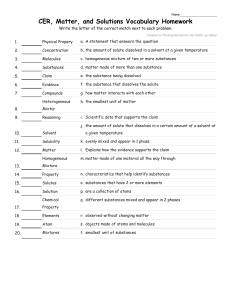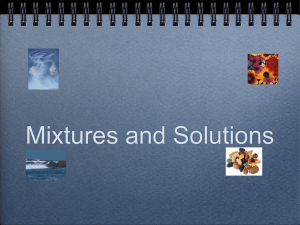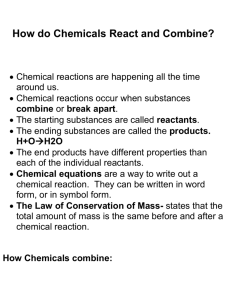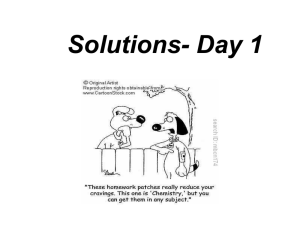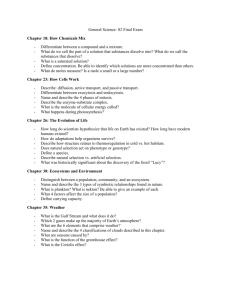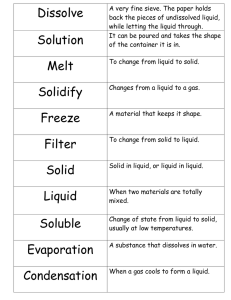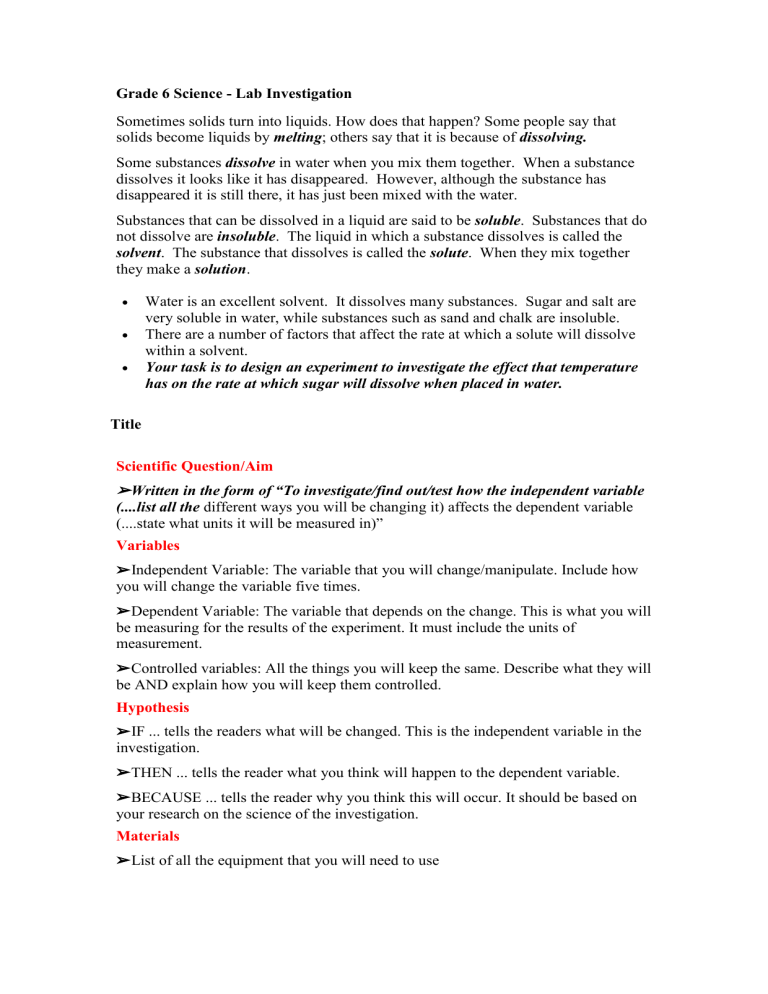
Grade 6 Science - Lab Investigation Sometimes solids turn into liquids. How does that happen? Some people say that solids become liquids by melting; others say that it is because of dissolving. Some substances dissolve in water when you mix them together. When a substance dissolves it looks like it has disappeared. However, although the substance has disappeared it is still there, it has just been mixed with the water. Substances that can be dissolved in a liquid are said to be soluble. Substances that do not dissolve are insoluble. The liquid in which a substance dissolves is called the solvent. The substance that dissolves is called the solute. When they mix together they make a solution. Water is an excellent solvent. It dissolves many substances. Sugar and salt are very soluble in water, while substances such as sand and chalk are insoluble. There are a number of factors that affect the rate at which a solute will dissolve within a solvent. Your task is to design an experiment to investigate the effect that temperature has on the rate at which sugar will dissolve when placed in water. Title Scientific Question/Aim ➢Written in the form of “To investigate/find out/test how the independent variable (....list all the different ways you will be changing it) affects the dependent variable (....state what units it will be measured in)” Variables ➢Independent Variable: The variable that you will change/manipulate. Include how you will change the variable five times. ➢Dependent Variable: The variable that depends on the change. This is what you will be measuring for the results of the experiment. It must include the units of measurement. ➢Controlled variables: All the things you will keep the same. Describe what they will be AND explain how you will keep them controlled. Hypothesis ➢IF ... tells the readers what will be changed. This is the independent variable in the investigation. ➢THEN ... tells the reader what you think will happen to the dependent variable. ➢BECAUSE ... tells the reader why you think this will occur. It should be based on your research on the science of the investigation. Materials ➢List of all the equipment that you will need to use ➢Include precise details with amount of each apparatus needed e.g. 250ml beaker(2) ➢Give exact quantities of all materials needed e.g. 10g of salt Method ➢Numbered steps of the procedure ➢Written in a third person, each step must start with a command verb e.g. Measure, add, mix, place,repeat...... ➢Include precise details on how the Independent Variable will be changed and how the Dependent Variable will be measured including the name of the measurement tool and units. ➢Include all Controlled Variables and how they will be kept the same ➢Steps must be logical ➢Use the quantities in your materials list ➢Explain how multiple sets of data will be collected (trials) ➢Explain how data will be processed; calculating averages / line of best fit (if line graph) ➢State the graph that you will be plotting. ➢List any safety related precautions. Data Results Present collected and transformed data (raw data table & graph) Data Analysis Interpret data and describe results Evaluation / Conclusion Discuss the validity of your hypothesis based on the outcome of your investigation and your research on the actual science involved. Discuss the validity of the method Describe improvements or extensions to the method
